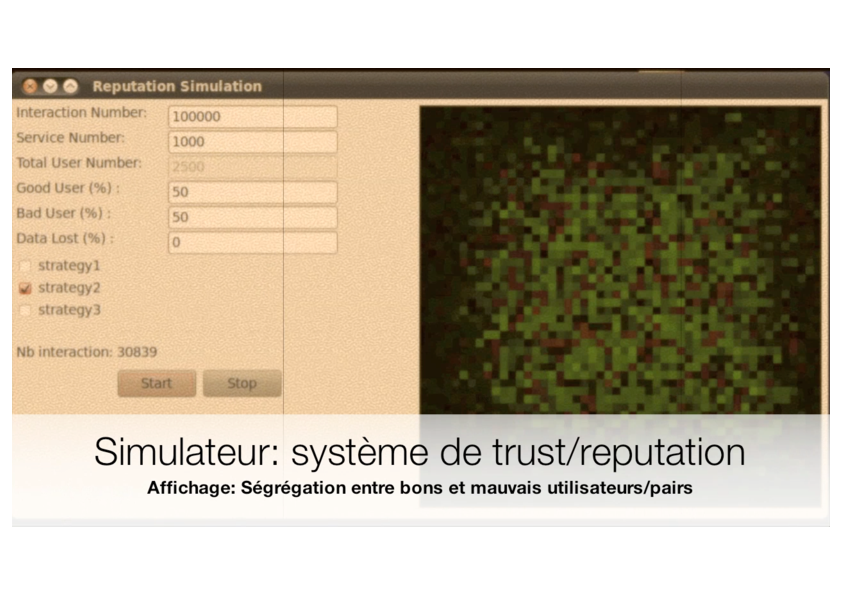Section: Software and Platforms
Reputation Computation Engine for Social Web Platforms
Participant : Thao Nguyen [contact] .
Among the three components of a Trust and Reputation System, information gathering is most dependent on the application system, followed by the decision support component and then by the building of a robust Reputation Computation Engine and an experimental GUI, showing how bad users are segregated by the engine. To simulate the working of the reputation engine, we set up a population of Nu users, providing the same service, and undertaking Nt transactions. In each transaction, a random consumer is assigned to request the service. Other users will then be candidate providers for this request. When a user plays the role of a consumer, his behavior is modeled in the raterType attribute. Three types of raters include HONEST, DISHONEST and COLLUSIVE. HONEST raters share their personal experience honestly, i.e. Rr = Ep. DISHONEST raters provide ratings 0:5 different from their true estimation, i.e. Rr = Ep +- 0:5. COLLUSIVE raters give the highest ratings (Rr = 1) to users in their collusion and the lowest ratings (Rr = 0) to the rest. Similarly, when a user acts as a provider, he can be one of the following types of providers: GOOD, NORMAL, BAD, or GOODTURNBAD. This type is denoted in providerType attribute. The QoS of the service provided by a BAD, NORMAL, or GOOD provider has a value in the interval (0; 0:4], (0:4; 0:7], or (0:7; 1] respectively. A GOODTURNBAD provider will change the QoS of his service when 50% of Nt transactions have been done in the simulation. To get a transaction done, a consumer obtains a list of providers, computes reputation scores for them, chooses a provider to perform the transaction, updates his private information, and publishes his rating for the provider. The quality of service that the consumer will experience depends on the providerType of the chosen provider. The difference between the consumer's rating for the provider and his observation depends on the consumer's raterType.
To run a simulation, the user must specify 10 parameters as described above: Simulation(Nu, Nt, %G, %N, %B, %GTB, %H, %D, %C, %dataLost). The simulator has been published in [22] .
In 2013, the simulator has been improved and made more robust: it would one of the output of the Ph.D. work of Thao Nguyen whose defense is envisaged in the first half of 2014.


